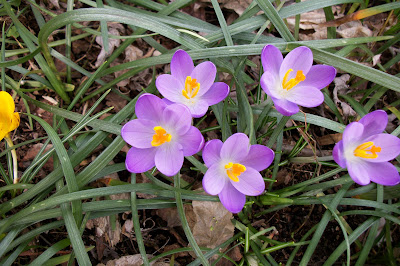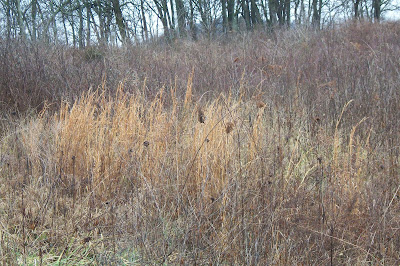I am a big fan of
flowers…bright disks and rays and beards and panicles in spring and summer show.
I can’t get much more excited than when my first Echinacea blooms or the
Ironweed emerges in purple drifts. And a big show-off Bearded Iris can’t be
ignored. But fall is when I really notice shrubs. I’m not talking about
evergreens right now; hollies, boxwoods, yews and laurels are great helpers in the yard and garden. They
give us year round color, and stability in the visual scheme. But right now is
when I notice the subtle textures, colors and promises of deciduous shrubs.
A Calycanthus (Carolina Sweetshrub) at a Nashville garden is
a bare twiggy thing right now (late November) but has crunchy pods of seeds at
its tips. The seed just reminds me of next year’s delicate magenta flower. If you prune a little right now, you’ll get
the sweet tangy aroma from the cuts in their wood.
The Witch hazel leaves are yellowing, but I know their
flowers are imminent. This is part of the fun of a garden in winter; like
Helleborus, Witch Hazels flower in December and January. Their cousin,
Fothergilla major, saves its blooms for spring, but is turning a gorgeous
yellow and orange on its last leafy legs. I like the shape of this shrub too: a
smallish upright branching plant, which like the Calycanthus has a lovely
spring flower. It’s a 3 season plant.
Cotoneaster is bronzy colored and full of berries,
Rhododendrons are glossy and green with next year’s buds curled up tight.
This Viburnum snowball bush is getting ready for winter
now. Sure, it will be a show off in
April with its huge round hydrangea-like ball of flowers. But look at this
color right now: rich brick red and yellow.
Oak Leaf Hydrangeas (Hydrangea quercifolia) situated in sun
are a deep purple red.
And of course there are Crape Myrtles (Ligustrum) which
really are more tree-like, but I have a few that I keep pruned smaller for my
convenience. The leaves are gone, but the smooth sand-colored trunks catch and
reflect the winter sun and give a sculptural effect.
The appeal of shrubs in fall is more are more subtle than
the maples, poplars, and oaks showering leaves down on our yards now but I like
their gentle bits of color and shape. I appreciate the details that we overlook
at other louder times of the garden year.
(See the easiest to understand description of why leaves change color, here: http://biologicalthinking.blogspot.com/2012/11/natures-crayons.html#links)
(Pictured, in order: Fothergilla major 'Mt Airy', Snowball Viburnum, Hydrangea quericifolia 'Pee Gee')
.JPG)




.jpg)






